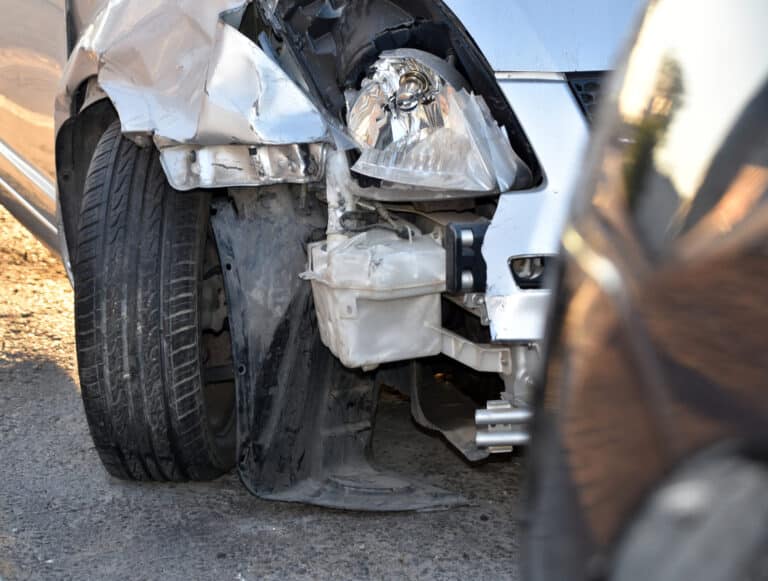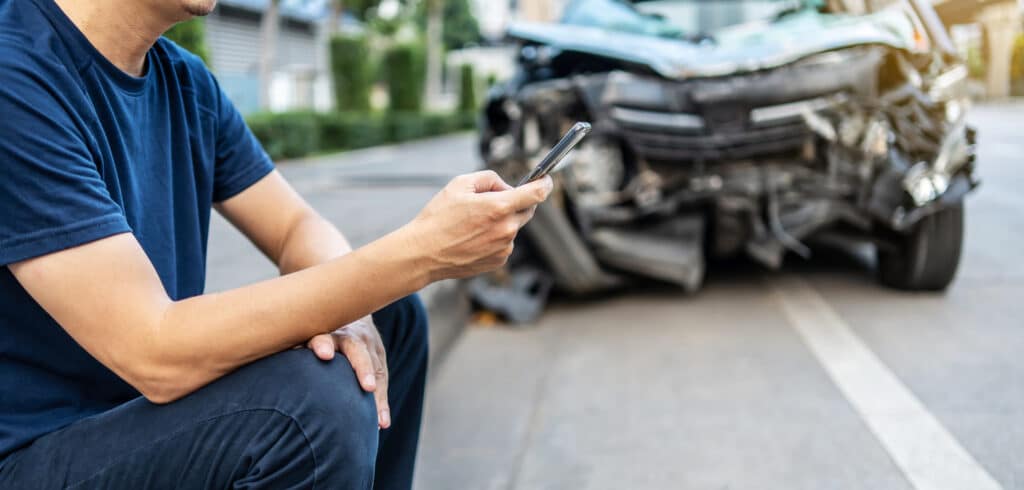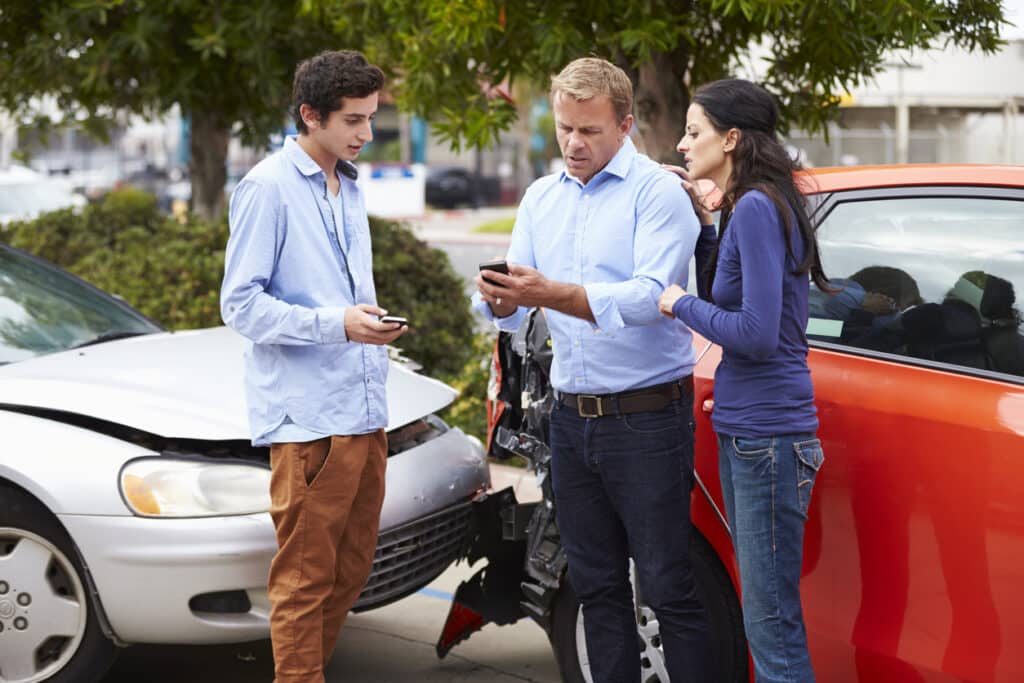Writing Vehicle Damage Reports
Category: Car Accidents
Article by Aaron F. Tuley

When two drivers collide as a result of a mistake or negligence on the part of one of them, the victim may be eligible to file a car accident claim. If you have any intention of pursuing damages for an Indiana car crash, you will want to make sure you take all of the necessary steps to document the accident.
How to Document a Traffic Accident in Indiana
Every car accident is different, which means there is no correct order in which to complete the proper steps after the crash occurs. We cover some of those steps in our article about five things to do after a car accident. When collecting evidence from a car accident scene, however, there are a variety of things you should do. If you’ve been involved in a motorcycle crash, consulting an Evansville motorcycle accident lawyer can provide guidance on the specific steps to take.
If you are not able to do any of the following things because of injuries sustained in the accident, see if you can get a passenger to complete some of them for you. If you are limited by time or circumstances, just do what you can. The most important thing in any vehicle accident is the safety of you and those around you. Your first thought should always be to prevent any further harm to the people involved. If you need to move to safety, move to safety; If you need medical care, get that medical care; you can worry about the rest of the details once you and those around you are safe.

1. Write Down Contact Information of Involved Drivers
Indiana is an at-fault state, meaning that in every accident, somebody will be responsible for paying for any damages incurred. If the at-fault driver has insurance, their insurance company will be held accountable for covering the victim’s expenses.
For this reason, one of the most important things to collect after a car accident is information about the other driver(s). If you do decide to file a car accident claim, you will need the following pieces of information:
- Contact information of those involved (phone numbers, email address, and home address)
- Full legal names
- License plate number and state
- Make and model of involved vehicles
- Insurance company name and insurance policy number
If you do not have time to write some of this information down, you can use your phone to take a photo or video of the information instead.
2. Take Photos and Videos of the Car Crash and Auto Accident Scene
When attempting to document car damage, there’s no such thing as too many photos. You can take pictures of everything. If you’re not sure whether you should take a photo of something, take it just to be safe and let the case investigators decide later whether or not it was important. On the off chance that it could be the difference in determining fault, you’ll want the photo.
When using a smartphone or other mobile device to take photos, the date and time will be included automatically. If you are using another camera, however, make sure that the time stamp indicates the correct date.
Below are some examples of things you should try to get photographs of for your car accident report.
- Any damage to your vehicle: Try to get photos of your vehicle from every angle, and even take some of the interior. As mentioned above, you never know what might become a crucial detail or later make the difference in determining fault.
- Any damage to other vehicles: Take similar photos of any other vehicle(s) involved. As much as an individual will allow you to photograph their car, you should take those pictures.
- Damage done to nearby buildings or objects: If any of the vehicles collided with a building, sign, or other property, or caused damage to an individual’s yard, take photos of all things affected.
- Any injuries sustained in the accident: Photos that can be taken of any visible wounds after an accident can be very valuable when determining physical harm done. Although it may be gruesome, getting photos of these injuries before treatment provides a more accurate representation of what happened.
- Other parties involved: This includes any other drivers, passengers, witnesses, emergency responders, or police officers that were present at the scene at one point or another. These photos will mainly help you remember what happened during the car accident or after the crash occurred. Car accidents can have an effect on your memory, and photos of involved parties can help you recount the story when explaining it to your Evansville car accident lawyer.
- The area around the auto accident scene: Many times the area immediately surrounding an auto accident scene can reveal key details about the crash. Writing down each one of these details can take a significant amount of time. The best practice is just to try and record everything. The way structures may have affected sight or the environment may have impacted driving conditions all matter. This also helps you see things you may have originally missed, like a security camera on a local business that could have recorded accident footage.
- Nearby traffic signs or lights: When reconstructing the events of a car accident, the nearby signs or lights can provide a greater understanding of the event. If one of these objects isn’t working properly, is positioned weirdly, or is difficult to see because of other factors, make sure you have photos of it.
- Car information and documentation: Some of the details necessary for a car accident case take a long time to write down. For example, the make and model of a vehicle, other drivers’ licenses, registrations, and even auto insurance policies. Taking photos or videos of these can save a lot of time.
- License plates: License plates present at the scene can provide a snapshot of who was there at the time of the accident. Sometimes this can help track down witnesses and, in the case of a hit and run accident, a visual of the other car’s license plate can help the police find the driver.
- Any other evidence of the auto accident: This could mean skid marks on the road, fallen cargo, and/or debris from the collision, all of which can help paint a better picture of what happened.
The main goal of photos and videos is to accurately document exactly what happened. If investigators know how the accident developed, they can better determine fault and get started assessing damages. This documentation helps with that assessment.
3. Take Pictures of Any Injuries Sustained From the Auto Accident
Documenting injuries is an extremely important aspect of photographing the scene. Once everybody is safe, you should focus on getting the injury photos that can be used for an insurance claim. A lot of the other information is used to recreate the scene, but injury photos are mainly used to value settlements.
Some injuries can also develop or worsen over time. Take pictures of any injuries, bruises, and other issues as they arise. Some symptoms cannot be photographed but may indicate a serious medical condition. Treat invisible symptoms just like visible symptoms and go see a doctor—even if you don’t think your symptoms are related to the accident.
4. Collect Contact Information and Statements From Witnesses
After some accidents, you may want to focus your attention on getting statements and information from witnesses first. If a bystander or passerby seems like they will leave the scene relatively quickly, it’s okay to approach them before taking some of the other steps.

Remember that witnesses aren’t legally obligated to say anything—or even stick around—so the way you present yourself to bystanders is important. Luckily, it’s not a difficult process, just politely introduce yourself and ask what they saw. If they seem trustworthy and their comments could support your car accident claim, ask if you can get a recorded statement of their description of the accident.
When searching for a credible witness who can be used as support, look for the following factors:
- Someone who saw the entire accident take place
- Someone who doesn’t know either involved party and has no stake in establishing who was at fault
- Someone who doesn’t seem to have issues with their hearing or sight
- Someone who wasn’t distracted by a phone or other device at the time of the accident
- Someone who appears to be believable and credible
The insurance company will likely look for holes in your witnesses’ accounts to defend their client, so the more credibility your witness has the better. There are a few different ways you can go about collecting car accident statements from witnesses:
- You can ask if it’s alright to record what they say with your phone or another device, this can involve just audio or audio and video.
- You can ask the witness to write out their statement as close to what they remember as possible. Have them include anything they saw and/or heard then sign and date any paper that they use.
- You can ask if it’s okay for you to write the details of what they saw and heard and then have them review, sign, and date any page you wrote.
In any case, make sure you also get the name and contact information from the witnesses. Phone numbers, mailing addresses, and email addresses are some of the most important pieces of information to get because your lawyer may want to contact them later for a statement.
Sometimes there aren’t any helpful witnesses at the scene of an accident. Look around to see if any local residents or businesses might have seen the accident from where they were. It’s also important to remember that the police may also be taking statements from witnesses or recording the scene. Feel free to offer any statements you have to the police so they can be included in the official accident report. But remember that anything you say can be used against you when determining a settlement.
Write Down a Car Accident Damage Description
The longer the period of time that passes after an auto accident, the more information you are liable to forget about it. It can become more difficult to remember who was present, how the crash happened, and how you felt afterward.
One way to better remember key details is to keep a car accident journal. The more you write about the accident while it’s fresh in your memory, the better you will be able to prepare a case with your lawyer. This journal could be written, typed, recorded, or created in any way that you can access in the future. A car accident journal is meant to help you recount what happened accurately; here are some things to include to make that happen:
- Information like the date, location, and time of the accident
- Weather and road conditions at the time
- Anybody—or anything—who was damaged
- Names, contact information, and insurance from other driver(s)
- How the accident happened from your perspective
- How the other driver believed it happened
- Witness statements from anyone you talked to
- Any other detail that could be relevant
Not only can your car accident journal help you keep track of evidence, it can also be used in court. After the accident, you should write as much as you possibly can, filling in other pieces of information over time.
If you start experiencing new injuries or issues at home or work, you’ll want to include those as they happen. And remember, all of this information is likely to be read publicly as part of your court case.
Keep Track of Any Bills, Receipts, or Records Related to Your Accident
You’ll want to save any and all receipts related to your car accident. The more money you request from an insurance company, the more they will pay attention to what you do with it.
You are able to receive compensation for a multitude of expenses caused by your accident. Personal injuries, property damage, lost wages, fees for vehicle towing, and rental costs can all be covered by personal injury claims.
The number of items covered will depend on the coverage you have, the insurance of the other driver, who was at fault, where the accident happened, and how well you can prove your case. If you’re unsure about your rights in a car accident case, it’s usually best to save all of your related paperwork just to be safe.
Here’s a list of some things you should keep after a car accident:
- Estimates for car maintenance and repair
- Letters from the insurance company
- Medical bills related to the accident
- Expenses for towing
- Fees for taxis or rental cars
- Paystubs which help calculate lost wages
- An official car accident or police records
- Payments for a house cleaning service if you can’t clean because of your injuries
- Payments for childcare if you can’t watch them because of your injuries
- Receipts for hotels you may have needed to stay at because of damage to your vehicle
- Receipts for meals eaten during medical appointments
- Any receipts for damaged property or electronics
Vehicle Damage Report FAQs
How long do you have to file a police report after a car accident?
You will always want to report the accident as soon as possible. Once you are out of harm’s way and have handled other necessary tasks, call the police and make a detailed report. In some cases the police will reach out to you when they are ready for your report of how the accident unfolded.
Beyond reporting, Indiana law allows you to file a lawsuit seeking compensation for up to two years from the date of a car accident. The statute of limitations on car accident lawsuits in Indiana can also be stretched in certain situations depending on the ability of a victim to pursue damages at the time.
Do police officers also take photos of accidents?
When the police arrive at the scene of an especially serious collision, they will typically take their own photos to document what happened. You can’t control what they do or don’t photograph, which means it’s also beneficial to take your own photos of the scene.
You will be responsible for proving your case to the insurance companies—or, in some cases, in a courthouse. Any information you can gather which supports your case will be beneficial, regardless of what the police do or do not do.
Tuley Law Office Can Help You File a Vehicle Damage Report
If you are involved in a car accident in Indiana in which the other driver is at fault, there are a variety of car accident injury claims you could be eligible to file.
Read our article to learn more about how an Evansville car accident lawyer can help you pursue a car accident lawsuit.
Have questions about your case?
Contact us